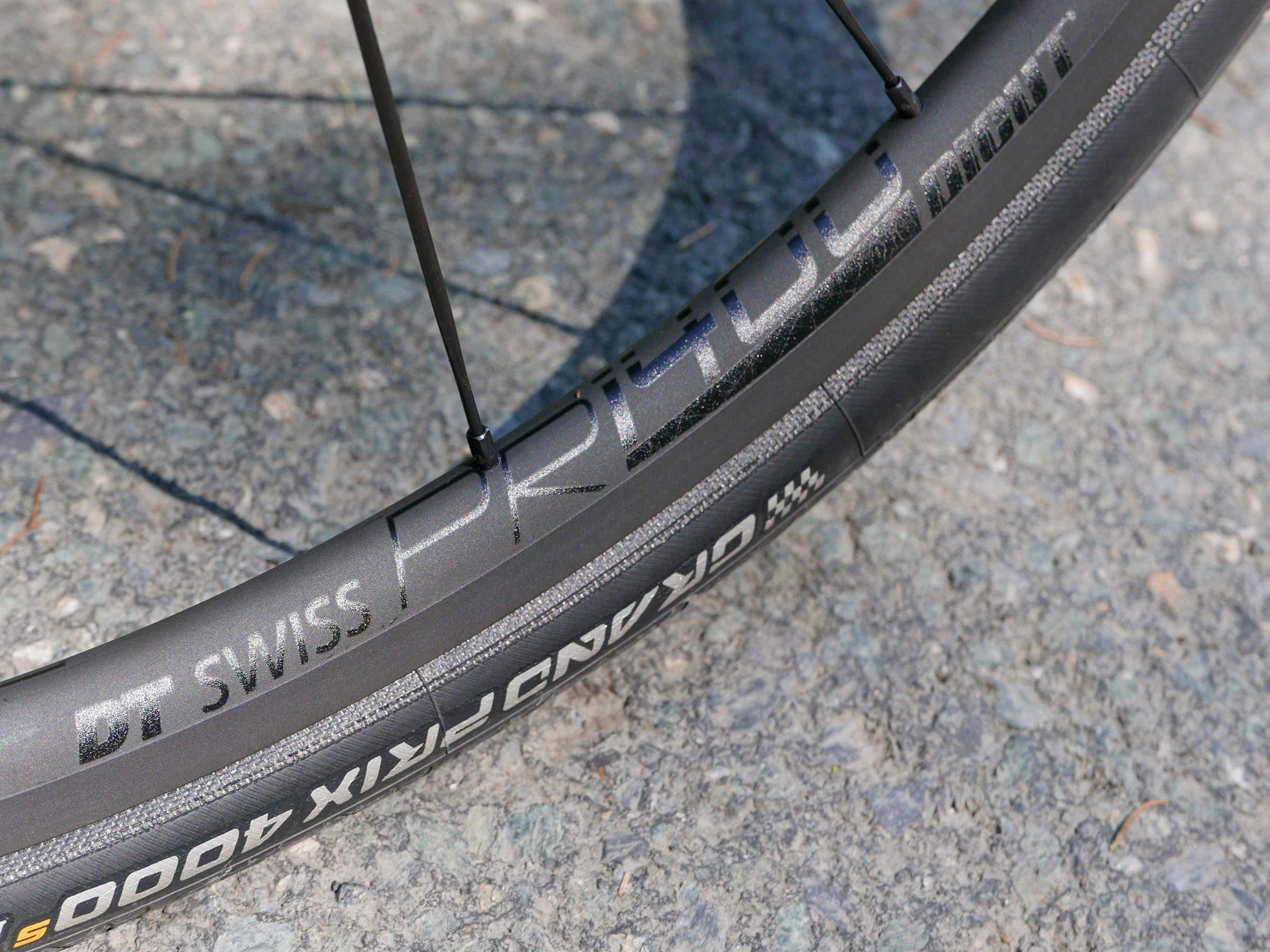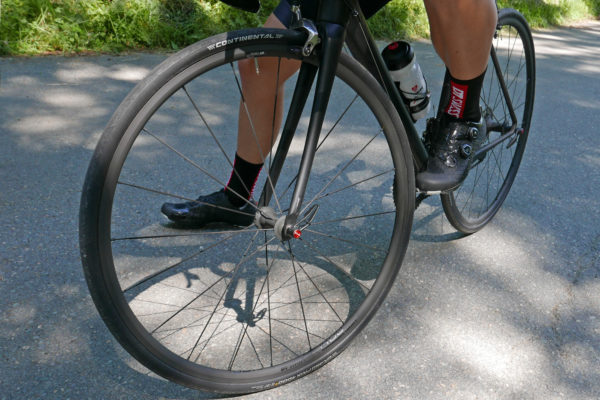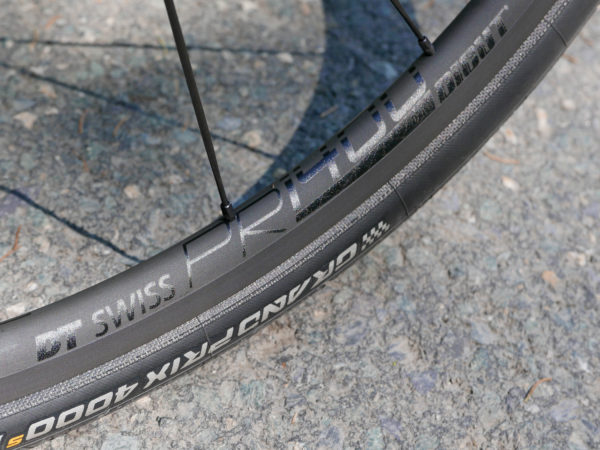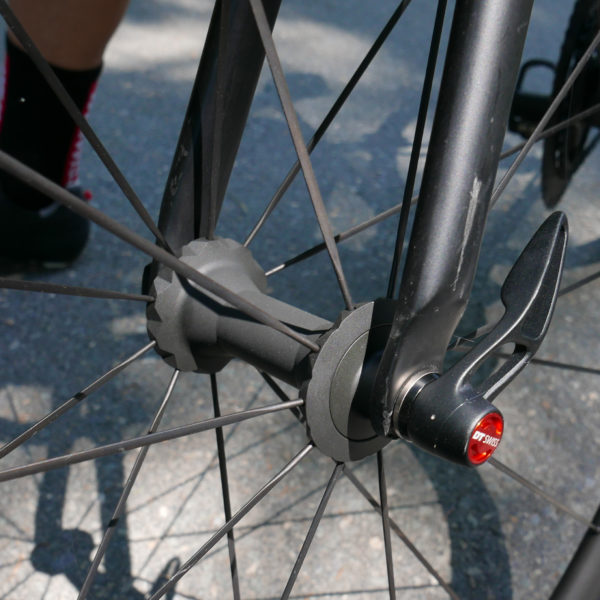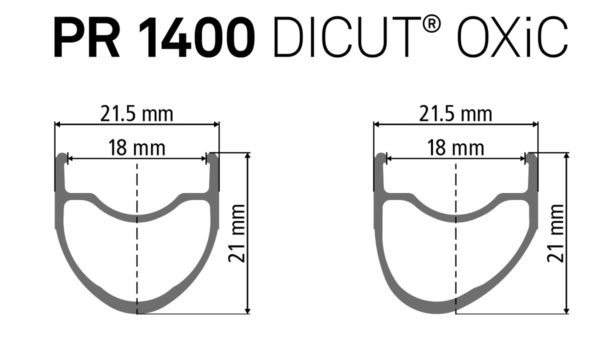We happened to be riding in the Alps a couple of weeks back and spotted a set of new aluminum wheels being tested in the real world by a rider from DT. While DT Swiss has completely revamped their mountain bike wheel line-up this year with the new Spline One range, we didn’t expect to see too much new on the road side of things. That said they are clearly working on some new tech, not just for the advent of disc brakes and the ever-expanding carbon wheel market. What we first noted on these wheels was the lack of the visible brake track. That got us asking questions, and we came away with some interesting info about the new OXiC coating that offers improved braking and durability. Take a closer look after the break…
What we have learned is that the new wheels use an innovative oxidized, ceramic treatment that is applied to the complete rim, much like anodizing, but after the braking surface is already prepped (machined?). The result is a matte black ceramic coating that is more flexible than the ceramic braking surfaces we used back in the 1990s, yet delivers that same improved braking feel and with greatly improved durability. It looks like something quite similar to Mavic’s Exalith treatment without requiring the extensive textured machining of the brake track, although we are told that the technology is fairly different in both the process and the material coating itself.
We rode with the DT rider on some steep descents (under sunny skies on asphalt and gravel) and the brakes seemed to offer him a good level of control, while not making a noise. Quiet running was certainly not something the first generation of Exalith was known for.
This OXiC coating is applied just to the rims, but the entire wheelset gets similar look for a stealth appearance. That means a special hub treatment for the aluminum Dicut hubs and different alloy endcaps, and even sandblasting the stainless steel bladed spokes.
DT has stated that this is the first set of wheels to get the new OXiC tech, which suggests that we might see it on a broader offering of wheels soon. The process works much as hard anodizing does, by submerging the alloy rim into a solution and then passing a current through it. What separates it from hard anodizing though is that this OXiC process creates a reaction that super heats the rim surface so that it produces a smooth oxide layer as it cools that is much more durable and more consistent across complex shapes. DT Swiss even goes on to say that the surface is so hard that it will not wear off over the entire life of a wheelset, even with the regular grit that the pads pick up when you ride. At the same time, since the OXiC is part of the rim material’s surface instead of just a coating, it is able to deform with the rim without cracking, making it much more durable than baked on ceramic coatings.
The wheels do require special pads and DT includes them with the OXiC wheels, and will sell them aftermarket as well.
The wheels look otherwise very similar to DT’s current RR21 Dicut in size and shape, with the same 18mm internal, tubeless-ready rim width and asymmetric 21mm deep profile, and will take over the top position as DT Swiss’ premier alloy road wheelset.
With a claimed weight of just 1435g (635g front, 800g rear) they are just 20g heavier than the RR21 and will sell for 998€/$1286. While not cheap the PR1400 Dicut OXiC wheels could make for a light all-rounder, tubeless-ready wheel for those who really want to get the best rim-brake stopping, once they become available in the first week of September.
